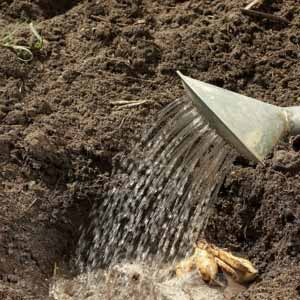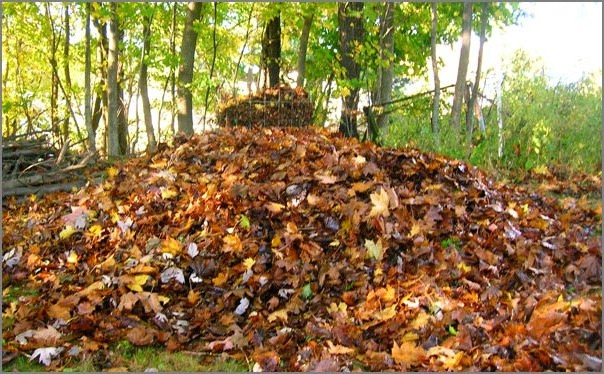Compost Basics

There are five basic components for proper composting: moisture, substrate, mixing, aeration, and temperature. All five of these components are interrelated in determining the health of the compost bin.
Moisture

Like all life, the composting microorganisms need moisture. The ideal moisture content is 50-60%. It should feel like a wrung-out sponge. If the compost is too wet, it can begin to smell; add dry material, such as leaves. If the compost is too dry, the degradation process can become stalled; add wetter material or spray with water.
Substrate


The microbes need the right kind of food in order to thrive and create a healthy compost pile. Compostable materials are generally divided into two groups: greens and browns. Greens are fresher materials, such as food waste and grass clippings; while browns are drier materials, such as dead leaves and paper. These two materials are differentiated because of the carbon to nitrogen (C:N) ratio. Greens tend to have a higher nitrogen content (low C:N) than browns, which have a high C:N. For example coffee grounds (a green, ironically) has a C:N of 20:1, while cardboard (a brown) has a C:N of 350:1. An ideal C:N ratio for composting is approximately 30:1. However, because it is impractical to measure this for backyard composting, a rule of thumb is to use equal parts greens to browns.
Mixing

Mixing is one of the most important tasks to be performed for healthy compost. Mixing accomplishes two primary goals: 1) it mixes the fresh material with the already composting material so that the microbes can come in contact with the new food, and 2) it aerates the compost so the microbes can breathe. While compost can be made without mixing (known as a static pile), proper mixing greatly accelerates the compost process. A rule of thumb is to mix the compost every time fresh material is added or about once or twice a week.
Aeration
Compost is an aerobic process, and therefore, the microorganisms need oxygen. Without proper aeration, anaerobic pockets can form in the compost pile. When these pockets form, odors can be produced by the compost and methane can be generated and emitted to the atmosphere. Aerating compost brings oxygen into the middle of the pile, and helps to prevent anaerobic pockets. Aeration is achieved by mixing the piling and by adding a bulking agent. Bulking agents are less degradable materials, such as twigs and cardboard, which hold their structure longer in the compost pile. This prevents the wetter, more degradable material from collapsing on itself and forming anaerobic pockets.
Temperature

Although temperature cannot be controlled directly in backyard compost, proper temperature is one of the key signs that all the other components are working properly. Because the microbial process generates heat, compost piles can be significantly warmer than the ambient temperature. Ideally the temperature should be around 40-60°C (104 to 140°F). A high temperature helps to sanitize the compost because pathogenic microorganisms are killed at these high temperatures. Temperature is also used to determine the overall health of the compost pile. If there is proper moisture, substrates, mixing and aeration, a compost pile will be warm.